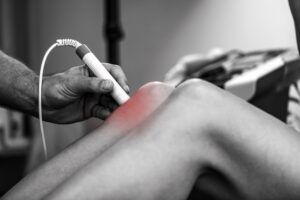Hip osteoarthritis is a degenerative joint disease that develops gradually as the cartilage within the hip joint breaks down. This cartilage is essential for smooth joint movement and acts as a cushion between the bones. When it wears away, bone-on-bone contact leads to inflammation, stiffness, reduced range of motion, and persistent pain. While the condition can initially be managed with conservative treatments such as medication, physical therapy, and lifestyle adjustments, osteoarthritis tends to progress over time.
As the disease advances, symptoms can become more severe and difficult to control. Patients may begin to notice that their daily activities—such as walking, bending, or even sleeping—are increasingly disrupted. When these disruptions begin to outweigh the benefits of non-surgical treatments, and quality of life is diminished, it may be time to consider hip replacement surgery.
Recognizing the Signs That Surgery May Be Needed
While surgery is never the first option, it becomes a valid consideration when non-surgical methods no longer offer sufficient relief. Patients often struggle to decide the right time to make the transition to surgery, especially when symptoms have worsened gradually over time. Understanding the signs can help make this decision clearer.
Common signs that hip replacement may be appropriate include:
- Pain that persists even at rest or during sleep
- Severe stiffness that limits your ability to walk, climb stairs, or get in and out of chairs
- Difficulty standing or walking for more than a few minutes at a time
- Limited relief from medications, injections, or physical therapy
- A noticeable impact on your overall quality of life, including mental and emotional well-being
These indicators point to a situation where joint damage has likely become too advanced for conservative treatments to be effective. At Premier Orthopaedics & Sports Medicine, P.C., serving Bloomfield, Englewood, and Union City, our specialists can assess your condition and determine whether surgery might be the next best step.
Evaluating Candidacy for Hip Replacement
Not every patient with osteoarthritis will be an ideal candidate for hip replacement right away. Doctors take a number of factors into account before recommending this type of surgery. Your overall health, age, bone density, weight, and activity level all play a role in determining surgical readiness. Moreover, imaging studies such as X-rays or MRIs are used to assess the severity of cartilage loss and bone damage.
If conservative treatments have failed and imaging shows significant joint deterioration, your doctor may recommend either a total hip replacement or a partial hip replacement. A total hip replacement involves replacing both the ball and socket of the joint with prosthetic components, whereas a partial replacement may focus on one part of the joint. The goal of either approach is to eliminate pain and restore mobility.
Weighing the Risks and Benefits
Like any surgical procedure, hip replacement comes with potential risks, including infection, blood clots, dislocation, and the possibility of needing revision surgery in the future. However, for many patients, the benefits significantly outweigh these risks. Advances in surgical techniques, materials, and rehabilitation protocols have made hip replacement safer and more effective than ever before.
The benefits of hip replacement surgery often include:
- Long-term relief from chronic joint pain
- Restoration of mobility and function
- Improved sleep and ability to perform everyday activities
- Enhanced quality of life and emotional well-being
Most patients report substantial improvements in their daily function and satisfaction within just a few months after surgery. The modern implants used today are also designed to last longer, making this option viable for a wider range of ages than in decades past.
What to Expect from Recovery
Recovery from hip replacement surgery is a critical phase that requires time, dedication, and guided support. Most patients begin physical therapy shortly after surgery to regain strength and flexibility. A structured rehabilitation plan helps improve joint movement and prevent complications such as joint stiffness or muscle atrophy. The full recovery timeline can vary, but many patients can resume normal activities within 6 to 12 weeks.
The initial weeks may involve the use of mobility aids such as walkers or canes, along with in-home support for tasks like dressing and bathing. Pain is typically well-managed with medications, and patients are encouraged to stay mobile to reduce the risk of blood clots and promote healing. The team at Premier Orthopaedics & Sports Medicine, P.C. is available to guide patients throughout every step of the recovery process to ensure optimal outcomes.
Making the Decision with Confidence
Deciding to undergo hip replacement surgery is a significant decision and should be made with full awareness of the potential outcomes and expectations. Patients who have tried multiple conservative treatments without success, and who experience daily limitations due to hip pain, are often the best candidates. Consulting with a trusted orthopedic specialist can clarify whether surgery is the right path.
At Premier Orthopaedics & Sports Medicine, P.C., we prioritize patient education, personalized evaluations, and shared decision-making. If you live in Bloomfield, Englewood, or Union City, NJ, and are struggling with chronic hip pain from osteoarthritis, we encourage you to schedule a consultation. Our goal is to help you move better, feel better, and return to the life you love—with or without surgery.
Sources
Katz, J. N., Losina, E., Barrett, J., et al. (2004). Association between hospital and surgeon procedure volume and outcomes of total hip replacement in the United States Medicare population. The Journal of Bone and Joint Surgery.
Hawker, G. A., Wright, J. G., Coyte, P. C., et al. (2000). Determining the need for hip and knee arthroplasty: The role of clinical severity and patients’ preferences. Medical Care.
Ethgen, O., Bruyère, O., Richy, F., et al. (2004). Health-related quality of life in total hip and total knee arthroplasty. The Journal of Bone and Joint Surgery.




